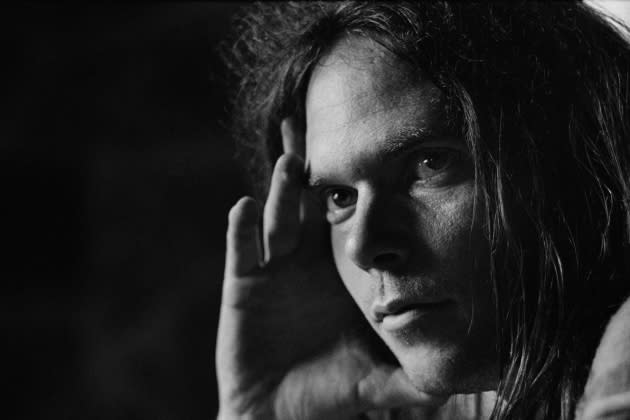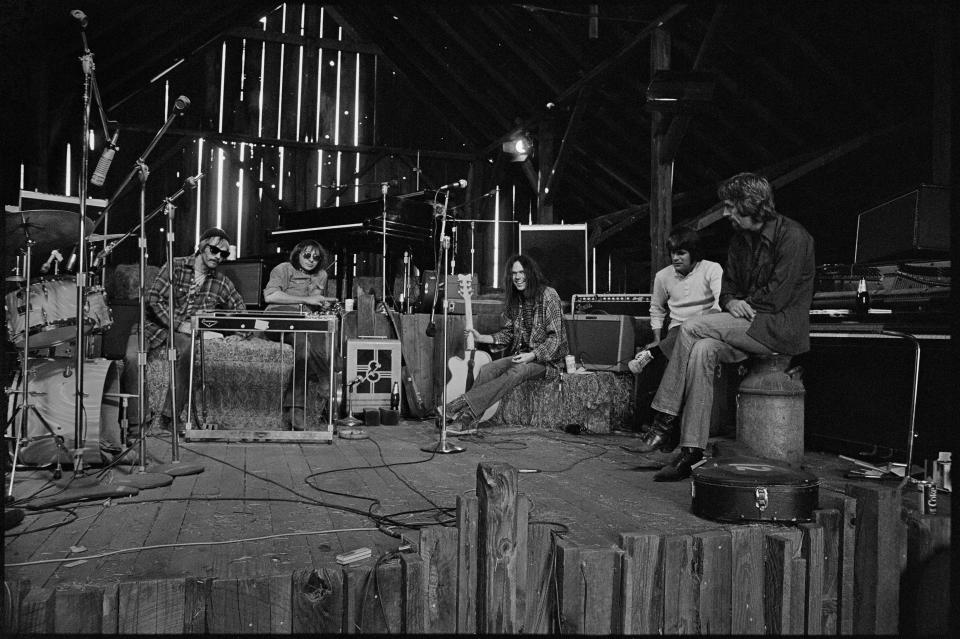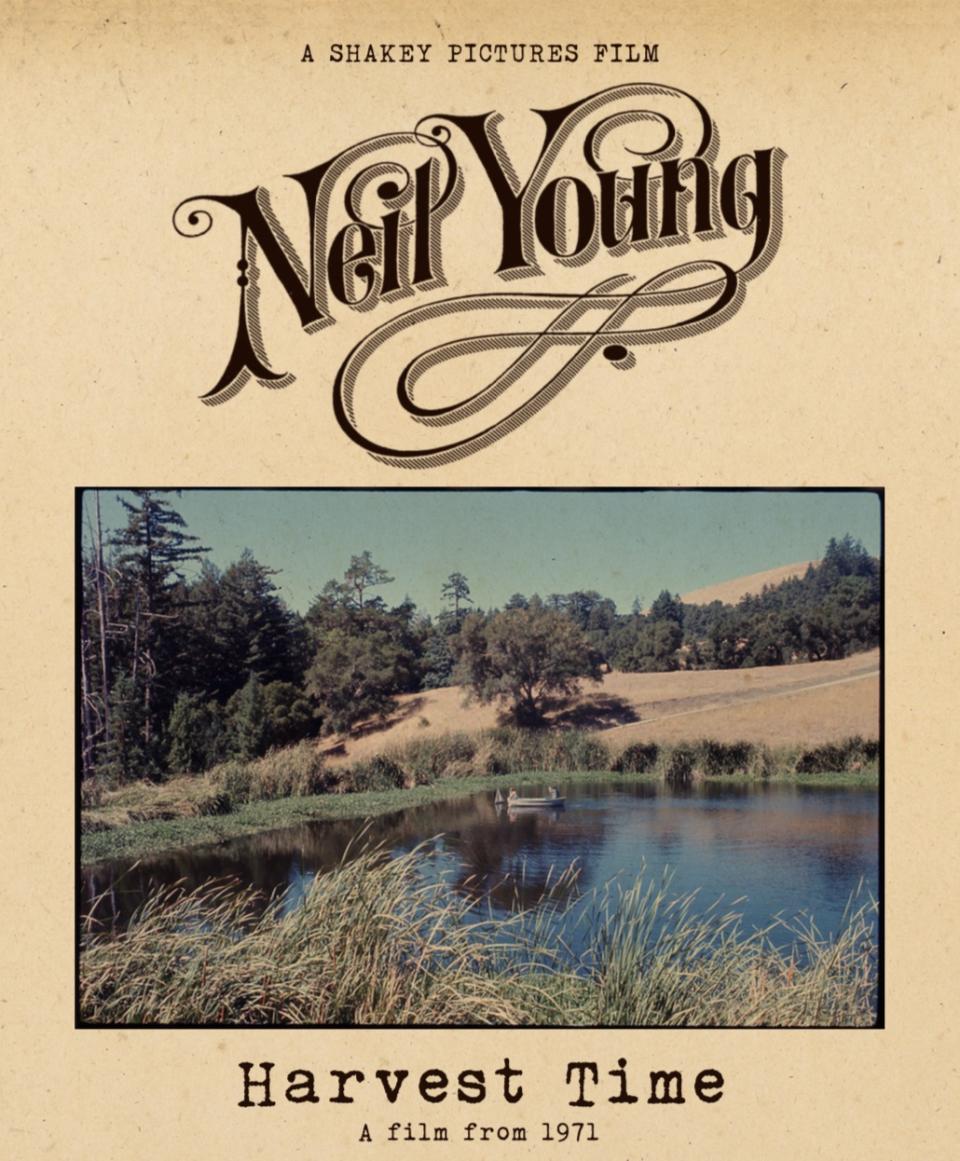Neil Young’s ‘Harvest Time’ Is a Fascinating, if Overlong, Documentary on the Creation of His Most Popular Album
- Oops!Something went wrong.Please try again later.
- Oops!Something went wrong.Please try again later.
- Oops!Something went wrong.Please try again later.

For all the scrutiny of the Beatles’ session tapes, the Grateful Dead’s concert archives and Prince’s much-vaunted vault of unreleased material, Neil Young is almost undoubtedly the music world’s most obsessive self-documenter.
As evidenced by his massive “Anthology” series and the furious pace at which he’s been releasing both new and archival material over the past decade, the man is not only a monumentally prolific musician, he’s a notorious hoarder who keeps everything. The past 18 months have seen him release a shelved album from 2000, four concerts from 1970 and ’71, another from 2019 and — hey! — his 41st and 42nd newly recorded studio albums, along with various film projects and probably more things we’re forgetting. Young said a few years ago that he realized his audience was reaching old age and he’d better release all this stuff while people are around to enjoy it — thus, simply keeping up is a full-time job.
More from Variety
The latest decades-old new release is actually a theatrical film: “Harvest Time,” a two-hour documentary on the making of Young’s most commercially successful (and many fans’ favorite) album, 1972’s “Harvest,” which includes such songs as “Heart of Gold,” “Old Man,” “The Needle and the Damage Done,” “Are You Ready for the Country?” and more. Presented by Shakey Pictures, Trafalgar Releasing, and Warner Records, this “exclusive cinema event” is in theaters worldwide on Thursday, December 1 with select encores on Sunday, December 4.

Both the album and “Heart of Gold” topped charts across the globe (including the U.S.), and the ensuing fawning and fanfare ultimately led Young to spurn fame and basically intentionally alienate much of his newly found audience, a move that set the defiantly self-directed mold for the next five decades of his ongoing career. Of course, none of that had happened yet in the first nine months of 1971, when Young was recording the album in Nashville, London, New York and the beloved Bay Area ranch where he still spends much of his time, and which in many ways is a co-star of this film.
“We’re just makin’ a film about … I don’t know, just the things we wanna film,” Young says during an interview with a Nashville DJ in the film. “There’s really not a big plan about it or anything … I’m making it like a make an album, sort of.”
While much of the footage is fascinating, the admitted absence of a plan comes across in the final product: It’s two full hours of Young rehearsing, recording and hanging out for long stretches of time with the newly formed Stray Gators backing band, along with vignettes of him recording backing vocals with sometime-bandmates Stephen Stills and David Crosby in California and Stills and Graham Nash in New York; working up “A Man Needs a Maid” with the London Symphony Orchestra (Glyn Johns, of “Get Back” fame, appears in several scenes); giving stellar solo performances of “Heart of Gold” and “Old Man”; and working through several songs with the band in the legendary barn at the ranch, surrounded by bales of hay and the dry, dry hills of Northern California, complete with grazing cows. He also performs some contemporaneous songs that didn’t make the album, like “Journey Through the Past” and “Bad Fog of Loneliness” (a 50th anniversary boxed set of the album, due Friday, includes three outtakes and Young’s fantastic 1971 solo concert for the BBC — marking a fifth 1971 solo concert release.)
Also appearing are Young’s partner at the time, actor Carrie Snodgress; musicians Jack Nitzsche (who would later take up with Snodgress and be arrested for threatening her), Tim Drummond, Ben Keith and Kenny Buttrey; managers Elliott Roberts and Ron Stone; photographer Joel Bernstein, roadie Bruce Berry (who would die of a drug overdose within a few months and be immortalized in Young’s song “Tonight’s the Night”); even the old man who inspired “Old Man.” A sobering number of them are now deceased.
We see many of the classic songs from the album come to life, with plenty of closeups on the 25-year-old, stringy-haired Young, who seems impossibly young and earnest, yet still iconic and iconoclastic. Conversely, we see the bro-chemistry between him, Crosby, Stills and Nash; and watch him interact with the unexpectedly hip conductor of a rather fussy-looking London Symphony Orchestra — a reminder of how much of the 1971 world was still, in the parlance of the era, “square.”
On that note, simply seeing the clothes — the flared jeans, patterned shirts, boots and big belt buckles — the (non-) haircuts and the attitudes is a head-spinning throwback: They’re drinking beer in the middle of the day and smoking weed out of some insane contraption (Nitzsche declines twice); at one point Young calls himself a “rich hippie,” which he probably still does. In the Nashville studio, the camera pans across a room in the Nashville studio with dark wood paneling, an electric typewriter and paper datebook on the desk and Rod Stewart’s “Maggie May” playing on the radio — it just doesn’t get more peak 1971 than that. To wit: “I feel more free now than I’ve ever felt before,” Young says. “So it’s groovy, y’know, I can dig it.”
Later in that same scene comes the film’s non-musical highlight: Young is interviewed by a remarkably precocious kid — boy-wonder Nashville radio and TV personality Gil Gilliam, 12 years old at the time — who asks some very on-point questions and pretty much steals this film even though he’s on camera for less than five minutes. He mentions that he’d interviewed Ringo a few months earlier, when the former Beatle was in Nashville recording his country-leaning sophomore solo album, “Beaucoups of Blues.” Asked by Young whether it was a radio interview, the kid replies, “No! I caught him out in the parking lot in a very inopportune time — when he got out of a Cadillac, I said HERE!,” he gestures with an imaginary microphone. (Gilliam, who is seen walking with crutches, was born with just one kidney, which prevented his legs from growing properly. He died in 1992 of complications from pneumonia.)
While “Harvest Time” does drag a bit, to be fair, so did “Get Back,” and fans will likely be riveted by the peak moments — and glad, like so many of Young’s other oft-delayed archival projects, that it’s finally seeing the light of day. In the Nashville interview here, the DJ comments on the fact that they’re being filmed and asks if people will be able to see the results in a theater.
“Yeah, I hope so,” Young replies. “Maybe pretty soon.” In typical Shakey fashion, that moment has arrived — 51 years later.

Best of Variety
Sign up for Variety’s Newsletter. For the latest news, follow us on Facebook, Twitter, and Instagram.

